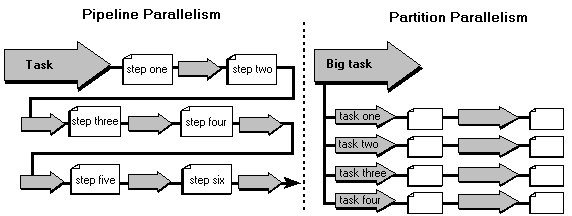
Software and applications running on an SMP or cluster system must use parallelism to benefit from the many disks and processors that these scalable architectures provide.
There are two generic kinds of parallelism:
The following diagram illustrates pipeline and partition parallelism.

Microsoft SQL Server provides a good example of both partition and pipeline parallelism when reading disks. By striping data across many disks, each disk can deliver a part of a large data read—that is partition parallelism. Microsoft SQL Server uses pipeline parallelism by issuing prefetch reads to the disks with one task, processing the data with another task, and passing it back to the application task.